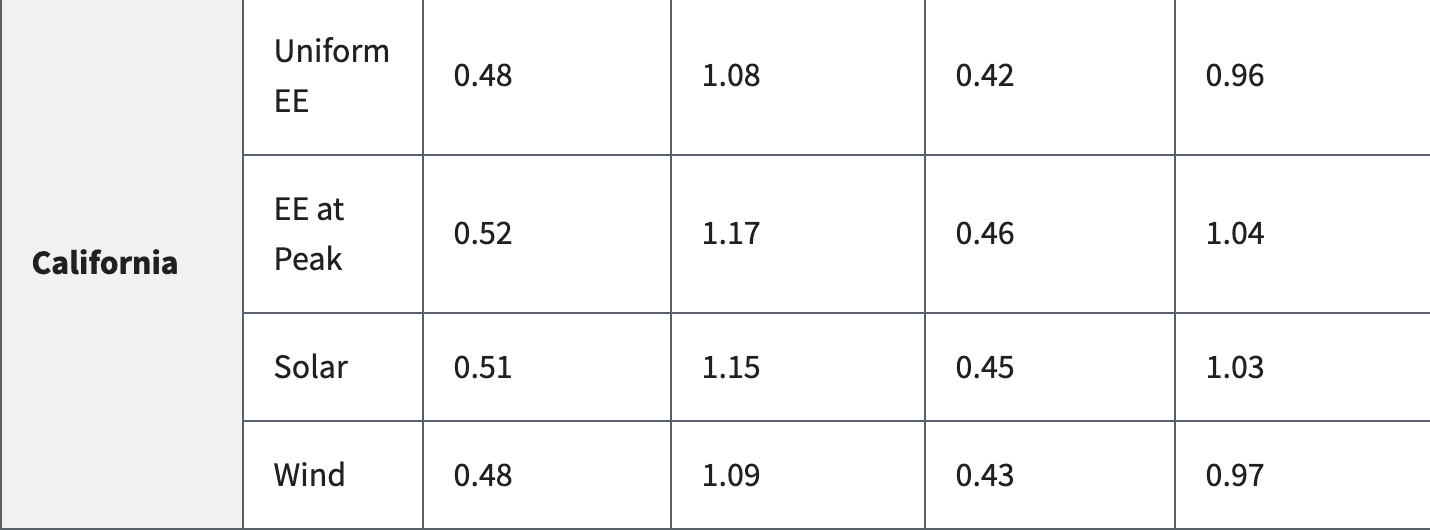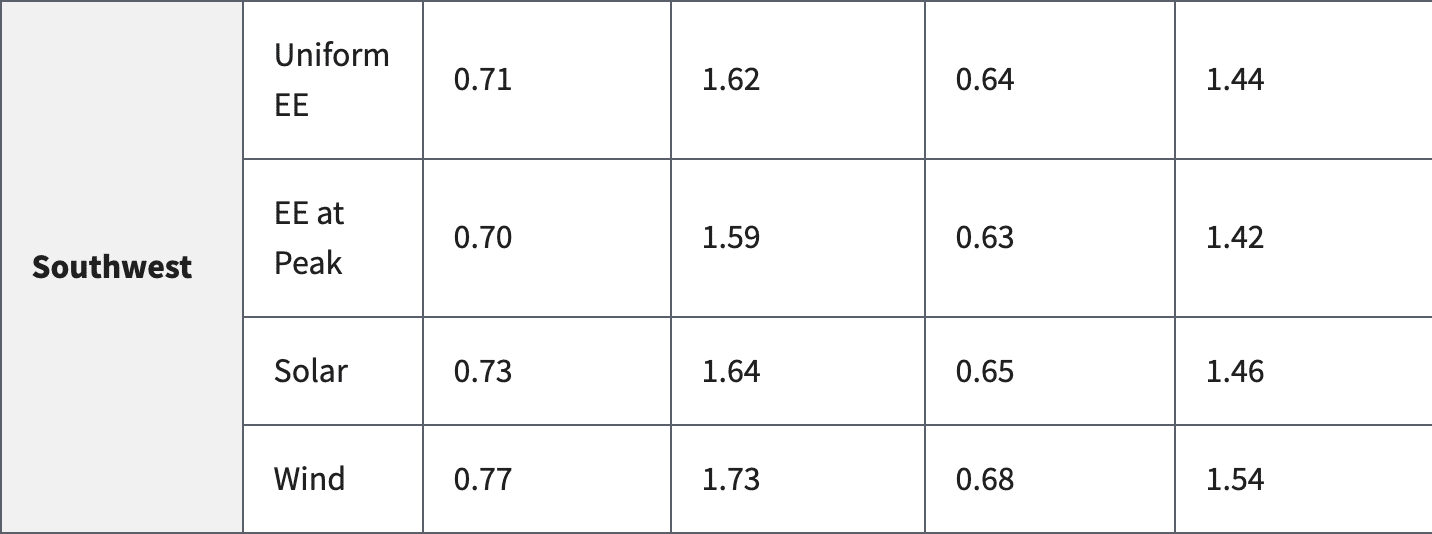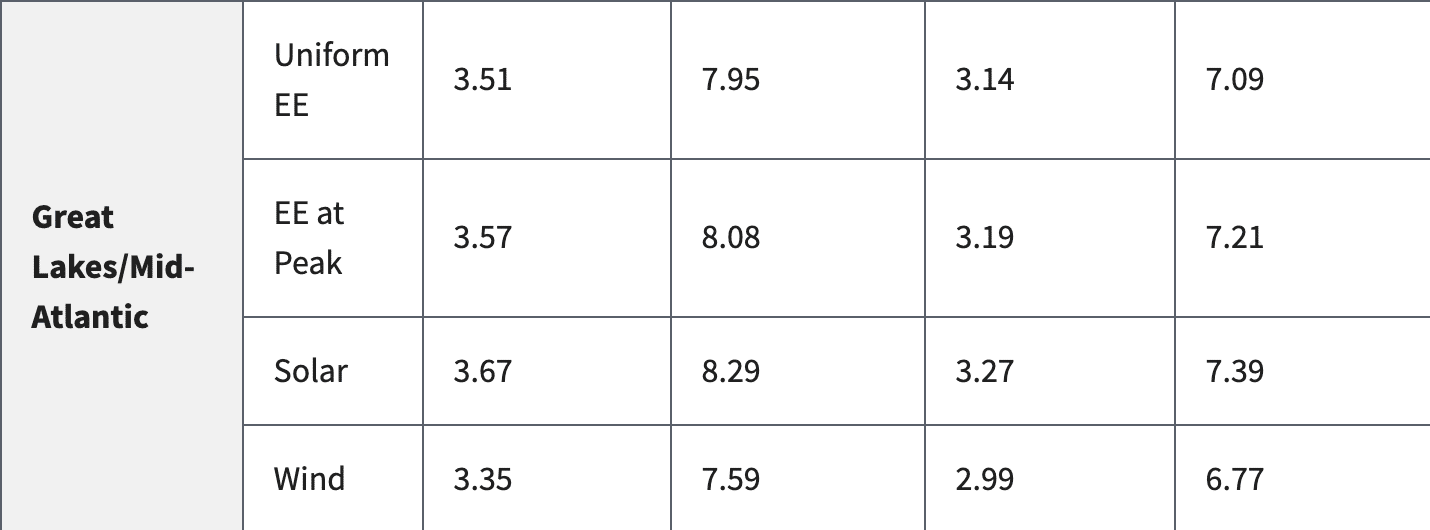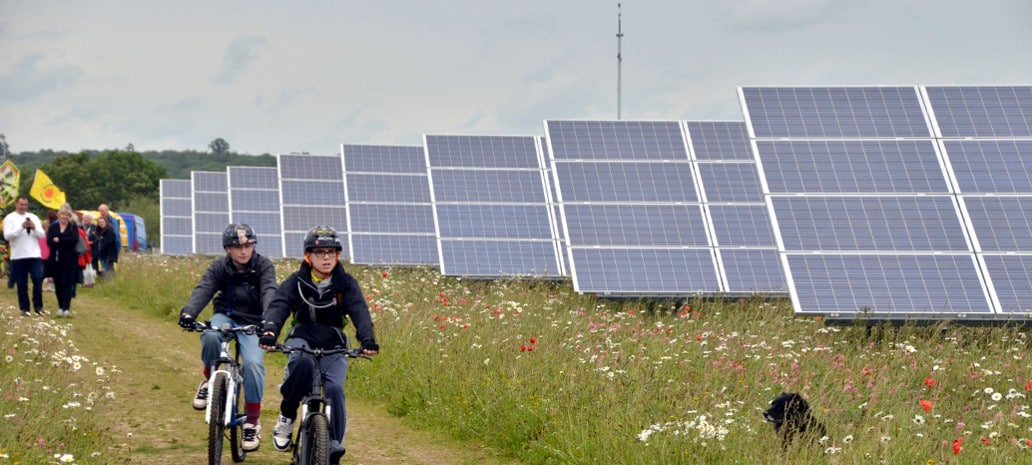Last month, researchers from the Harvard Center for Climate, Health, and the Global Environment released a report outlining the regions of the country where installing utility-scale solar would bring the greatest health benefits. Now, the Environmental Protection Agency has released a set of values that attribute a per kWh value to the health benefits provided by installing solar in the regions that need it most.
The health benefits per kWh values represent monetized estimates of the health benefits per kWh, shown in the data as cents/kWh, from fossil fuel-based generation reduction or avoidance as a result of energy efficiency, solar, and wind projects, programs, and policies. The estimates are made at 3% and 7% discount rates, with the lower end estimations assuming people are not as sensitive to PM2.5 changes as the high estimates.
For anyone wondering, PM2.5 refers to atmospheric particulate matter (PM) that have a diameter of less than 2.5 micrometers, which is about 3% the diameter of a human hair.
As was to probably be expected, the regions that would witness the smallest economic health benefits of new solar are the regions that already have the most, those being California and the American Southwest. Under the 3% estimation, California would see a per kWh benefit range of 0.5-1.15 cents, while the Southwest would see 0.73-1.64 cents. Under the higher 7% estimation, those figures fall to 0.45-1.03 cents/kWh in California and 0.65-1.46/kWh in the Southwest.


Moving from the least to the most benefit, it should come as no surprise that said benefit is found in Great Lakes/Mid-Atlantic and Upper Midwest regions. These are the same region where renewables were found to have the greatest health benefits in the aforementioned Harvard study. The Upper Midwest and Great Lakes/Mid-Atlantic regions both have areas of dense, high, population, with concentrations of dirty energy generation. Therein, they’ll see a greater benefit from replacement via renewables than our previous areas: California, high population and density with a ton of existing renewables and the Southwest, lower population and density with a ton of existing renewables.


As the handy charts show, solar is worth 3.67-8.29 cents/kWh under the 3% estimation in the Great Lakes/Mid Atlantic region and 2.89-6.53 cents in the Upper Midwest. Again, the values fall under the 7% estimation to 3.27-7.39 cents/kWh in the Great Lakes/Mid Atlantic and 2.58-5.83 in the Upper Midwest.
The EPA shares that while the data is an interesting look at the monetized health benefits of state energy efficiency and renewable energy investments, it should not directly be used to directly justify or inform federal regulatory decisions. The data is a tool for reasoning, not a hard justification for action
This content is protected by copyright and may not be reused. If you want to cooperate with us and would like to reuse some of our content, please contact: editors@pv-magazine.com.









The military sees value in using solar from not having to deliver fuel into hostile areas of the world. Afghanistan comes to mind. The less fuel you haul, the more lives you save.